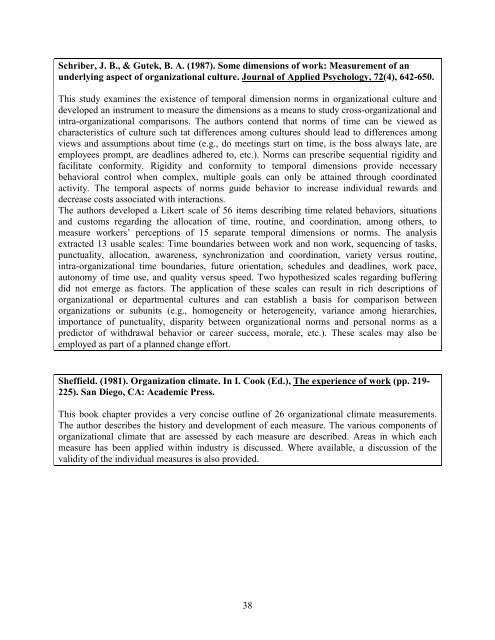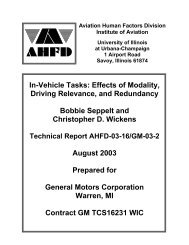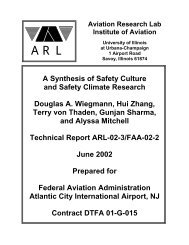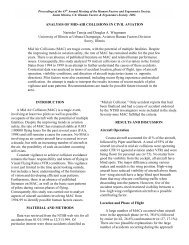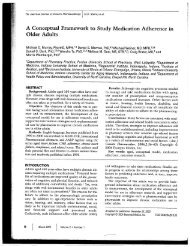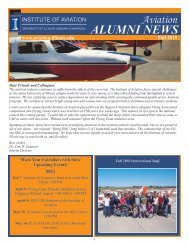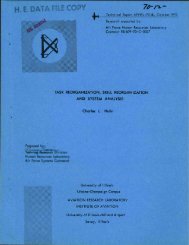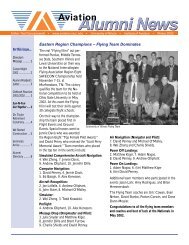Defining and Assessing Safety Culture in High Reliability Systems
Defining and Assessing Safety Culture in High Reliability Systems
Defining and Assessing Safety Culture in High Reliability Systems
Create successful ePaper yourself
Turn your PDF publications into a flip-book with our unique Google optimized e-Paper software.
Schriber, J. B., & Gutek, B. A. (1987). Some dimensions of work: Measurement of an<br />
underly<strong>in</strong>g aspect of organizational culture. Journal of Applied Psychology, 72(4), 642-650.<br />
This study exam<strong>in</strong>es the existence of temporal dimension norms <strong>in</strong> organizational culture <strong>and</strong><br />
developed an <strong>in</strong>strument to measure the dimensions as a means to study cross-organizational <strong>and</strong><br />
<strong>in</strong>tra-organizational comparisons. The authors contend that norms of time can be viewed as<br />
characteristics of culture such tat differences among cultures should lead to differences among<br />
views <strong>and</strong> assumptions about time (e.g., do meet<strong>in</strong>gs start on time, is the boss always late, are<br />
employees prompt, are deadl<strong>in</strong>es adhered to, etc.). Norms can prescribe sequential rigidity <strong>and</strong><br />
facilitate conformity. Rigidity <strong>and</strong> conformity to temporal dimensions provide necessary<br />
behavioral control when complex, multiple goals can only be atta<strong>in</strong>ed through coord<strong>in</strong>ated<br />
activity. The temporal aspects of norms guide behavior to <strong>in</strong>crease <strong>in</strong>dividual rewards <strong>and</strong><br />
decrease costs associated with <strong>in</strong>teractions.<br />
The authors developed a Likert scale of 56 items describ<strong>in</strong>g time related behaviors, situations<br />
<strong>and</strong> customs regard<strong>in</strong>g the allocation of time, rout<strong>in</strong>e, <strong>and</strong> coord<strong>in</strong>ation, among others, to<br />
measure workers’ perceptions of 15 separate temporal dimensions or norms. The analysis<br />
extracted 13 usable scales: Time boundaries between work <strong>and</strong> non work, sequenc<strong>in</strong>g of tasks,<br />
punctuality, allocation, awareness, synchronization <strong>and</strong> coord<strong>in</strong>ation, variety versus rout<strong>in</strong>e,<br />
<strong>in</strong>tra-organizational time boundaries, future orientation, schedules <strong>and</strong> deadl<strong>in</strong>es, work pace,<br />
autonomy of time use, <strong>and</strong> quality versus speed. Two hypothesized scales regard<strong>in</strong>g buffer<strong>in</strong>g<br />
did not emerge as factors. The application of these scales can result <strong>in</strong> rich descriptions of<br />
organizational or departmental cultures <strong>and</strong> can establish a basis for comparison between<br />
organizations or subunits (e.g., homogeneity or heterogeneity, variance among hierarchies,<br />
importance of punctuality, disparity between organizational norms <strong>and</strong> personal norms as a<br />
predictor of withdrawal behavior or career success, morale, etc.). These scales may also be<br />
employed as part of a planned change effort.<br />
Sheffield. (1981). Organization climate. In I. Cook (Ed.), The experience of work (pp. 219-<br />
225). San Diego, CA: Academic Press.<br />
This book chapter provides a very concise outl<strong>in</strong>e of 26 organizational climate measurements.<br />
The author describes the history <strong>and</strong> development of each measure. The various components of<br />
organizational climate that are assessed by each measure are described. Areas <strong>in</strong> which each<br />
measure has been applied with<strong>in</strong> <strong>in</strong>dustry is discussed. Where available, a discussion of the<br />
validity of the <strong>in</strong>dividual measures is also provided.<br />
38


